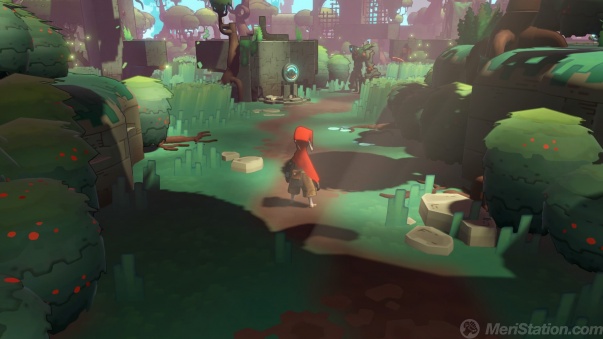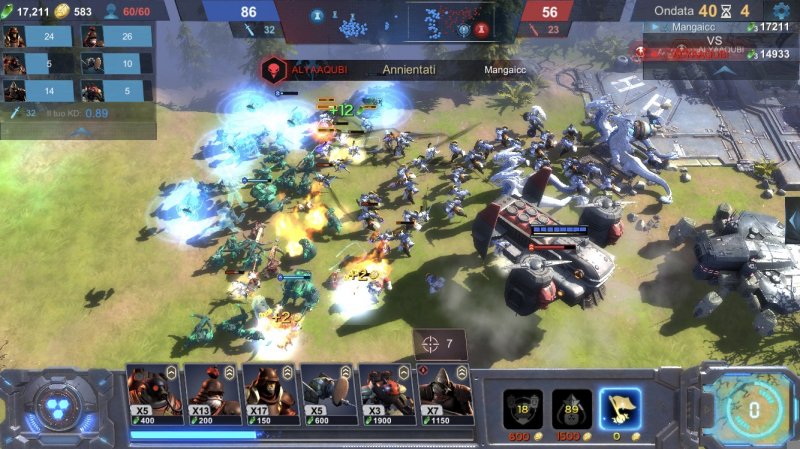Founded by veterans in the field of action RPG, Runic Games was unveiled a little less than a decade ago thanks to Torchlight , heir to the Diablo school that was succeeded by a sequel according to many able to rival Blizzard on their own terms. Hob, however, has little
or nothing to do with those games. The superior perspective (something more lax here), the taste for bright colors and specific aspects of the design may give away the hand of the studio, but far away is the emphasis on the combats, statistics and the dungeon. Very different influences do not take long to be noticed in a work t
hat already from the Steam page recommends being played with command (although in our case we have opted for the PS4 version). Hob is an adventure that fits much better in the list of games mentioned during the introductory paragraphs, displays ideas an
d mechanics that would not be out of place in a Zelda or similar. But in the process it also shows that the change of registration is not only motivated by the intention to appeal to another kind of audience, but because Runic Games really has new things to contribute to this genre.
The moldable world: Exploration through change
Retaking the thread of the conventions, a rambling on the subject would hardly be complete without its allusion to the monomite and that proposal on the journey, evolution and triumph of the hero in every adventure worth its salt passes through recurring stag
es. It is something also present in Hob, despite its self-imposed plot austerity : the game completely dispenses with dialogues and is intentionally vague when it comes to posing its background , although it
does not stop telling a story and marking several of the boxes that connect so many legends to each other. However, the grace here is that this evolution is shown in a much clearer way in the world itself than in the figure of the hero. Obviously, he (and by extension through the command, us) is the engine that moves the story forward with his actions, but Hob re
creates more than usual in what they mean for the environment that surrounds him. Hybrid between nature and technology, the world created by Runic Games is made up of large pieces of assembly that give rise to plains, forests or lakes if they are connected to each other using the appropriate mechanisms.
Beyond the effectiveness of the approach to stand out and offer something original, Hob uses it to solve some practical problems that often face
the adventures. First, it organically controls the progression , linking the zones’ access to our ability to open them with the game’s language (that is, interacting with objects and solving environmental puzzles) instead of at arbitrary moments in the plot. The development finds a good balance between linearity and flexibility since, alt
hough there is a series of pre-established steps, it also gives a lot of freedom with the order of many objectives and the player has a very active role in interpreting and unraveling the design. The simile of the world is often used as a puzzle, a puzzle that distributes its pieces on the table so that we can then fit them. Metroidvania, an adventurous subgenre with emphasis
on acquiring skills that work like keys, are essentially this, but Hob gives another twist: although there are techniques that unlock areas (like bre
aking weak walls with our robotic fist, or reaching points special with an electromagnetic hook), here the idea is to transform the world so that it allows us to progress .
Deploying the design: Micro and macro-transformations
Going into detail, and leaving the fighting aside (they will have their own explanation later), the method of advancement in Hob is divided into two types of actions, which we can define as ” micro-transformations ” and ” macro- ” transformation
s . ” The first form the bulk of the game and are all those operations dedicated to achieving an immediate result in the area we are in: they are activated by taking batteries to devices without power, pushing rotating mechanisms, activating switches, etc. They a
re simple actions , constantly repeated, but the key does not lie in what , but in how they are introduced as part of the design. The argument austerity also moves to the playable l
evel, and beyond the specific indications of a certain secondary character (again, without the need for dialogues) and the little intrusive work of the interface, Hob invites us to look at the scenarios, understand our account which elements fail or are absent, and
we do something about it. Although of humble technical invoice, the graphical section does a great job transmitting this class of ideas
without words , something to which the aforementioned repetition contributes, but above all the clarity of the visual design .
For the regulars to the genre it is probably a disappointment to find out that the difficulty never escalates too much , but the fact that we can be for hours wandering, observing and solving the small puzzles that alter the scenarios without any in
terruptions or tutorials is a good compensation for it. Although in other areas they are very different, Hob shares with the light adventures like Journey or Abzu that desire to immerse us in their world, cut unnecessary distractions, let us explore at our own pace and learn without being taken by the hand unless it is strictly necessa
ry. It even dedicates strategic positions to serve as lookouts where the protagonist can rest while the music, as a rule in the background, is placed in front and the camera looks for the best way to focus a piece of the area we are traveling, or we will travel during
the next minutes. Enjoy this contemplative facet is vital to enjoy Hob as a game, because although it also has plataformeo, combats and small doses of dungeon (very light , little to do with Zelda in that area), in practice works as a fusion th
at does not aspire to the peaks of other proposals, but at your own level of serenity.


